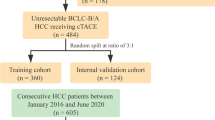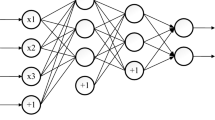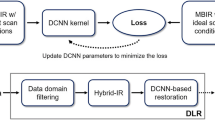Abstract
To investigate the application of Magnetic Resonance Imaging (MRI) combined with Computed Tomography (CT) scan images based on deep learning in the evaluation of postoperative TACE efficacy as well as the prevention and treatment measures of Vasovagal Reflex (VVR). A total of 256 patients who were diagnosed with primary liver cancer in our hospital and were treated with Transcatheter Arterial Chemoembolization (TACE) for liver cancer. They were divided into a combined group (110 cases) and a control group (146 cases). The combined group underwent MRI and CT after the operation. The control group only underwent an MRI examination. To explore the role of CT and MRI images based on deep learning in the evaluation of interventional therapy for liver cancer, the MRI and CT images were processed by establishing a Convolutional Neural Networks (CNN) model. Then, the image information was counted and analyzed. The segmentation effect of the residual situation of the MRI and CT image enhancement regions processed by the deep learning model was relatively good, and can accurately display the presence of the lesion. Also, the diagnostic efficiency was above 0.7, and the diagnostic efficiency was better. The sensitivity, specificity, accuracy, and negative predictive value of diagnosis in the control group were significantly lower than those in the combined group (P < 0.05). After the measurement, the minimum short diameter of the control group was significantly higher than that of the combined group (P < 0.05). Proposed specific preventive measures for VVR from the three aspects, before, during, and after TACE surgery, can reduce the adverse consequences caused by VVR. The methods of the investigation can improve the accuracy of the effect evaluation after TACE treatment, reduce the occurrence of complications and adverse consequences, thereby improving the therapeutic effect of liver cancer patients.








Similar content being viewed by others
References
Drake TM, Bird TG (2019) Editorial: simplifying screening for primary liver cancer—do the LCR1 and LCR2 tests hold the key? Alimentary Pharmacol Therapeutics 49(5):612–613
Zhou F, Zhao Q, Xu H et al (2018) Raltitrexed versus fluorouracil in TACE for treatment of middle and advanced primary liver cancer: meta-analysis. Chin J Interventional Imaging Therapy 15(11):655–660
Liu Y, Wang Y, Lei GY et al (2016) Influence of TACE combined with radioactive seed radiotherapy on primary liver cancer patients’ malignant biological indicators. J Hainan Med Univ English Edition 022(012):135–138
Chen X, Chang Z, Liu Z (2019) d-dimer increase: an unfavorable factor for patients with primary liver cancer treated with TACE. Cancer Chemother Pharmacol 83(4):797–802
Varzaneh FN, Pandey A, Ghasabeh MA et al (2018) Prediction of post-TACE necrosis of hepatocellular carcinoma usingvolumetric enhancement on MRI and volumetric oil deposition on CT, with pathological correlation. Euro Radiol 28(7):3032–3040
Wang Y, Chen J (2017) Comparative analysis of CT and MRI in evaluating therapeutic efficacy of primary liver cancer after transcatheter arterial chemoembolization with lipiodol. J Pract Med 33(18):3110–3114
Yasaka K, Akai H, Abe O et al (2018) Deep learning with convolutional neural network for differentiation of liver masses at dynamic contrast-enhanced CT: a preliminary study. Radiology 286(3):887–896
Zhou LQ, Wang JY, Yu SY et al (2019) Artificial intelligence in medical imaging of the liver. World J Gastroenterol 25(6):672
Zhou J, Sun HC, Wang Z et al (2018) Guidelines for diagnosis and treatment of primary liver cancer in China (2017 Edition). Liver Cancer 7(3):235–260
Frid-Adar M, Diamant I, Klang E et al (2018) GAN-based synthetic medical image augmentation for increased CNN performance in liver lesion classification. Neurocomputing 321:321–331
Tomar GS, Mishra RK, Chaturvedi A (2018) Glossopharyngeal vagal reflex: a matter of concern during neurosurgery. Neurology India 66(6):1822–1824
Chaudhary K, Poirion OB, Lu L et al (2018) Deep learning–based multi-omics integration robustly predicts survival in liver cancer. Clin Cancer Res 24(6):1248–1259
Liu L, Shao G, Pang P (2017) Application of diffusion-weighted and dynamic contrast-enhanced MRI in evaluating the curative effect of TACE for advanced hepatocellular carcinoma: recent progress in research. J Interventional Radiol 26(8):756–759
Grabauskas G, Wu X, Song I et al (2016) Increased activation of the TRESK K + mediates vago-vagal reflex malfunction in diabetic rats. Gastroenterology 151(5):910–922
Author information
Authors and Affiliations
Corresponding author
Additional information
Publisher's Note
Springer Nature remains neutral with regard to jurisdictional claims in published maps and institutional affiliations.
Rights and permissions
About this article
Cite this article
Zheng, C., Chen, L., Jian, J. et al. Efficacy evaluation of interventional therapy for primary liver cancer using magnetic resonance imaging and CT scanning under deep learning and treatment of vasovagal reflex. J Supercomput 77, 7535–7548 (2021). https://doi.org/10.1007/s11227-020-03539-w
Accepted:
Published:
Issue Date:
DOI: https://doi.org/10.1007/s11227-020-03539-w




